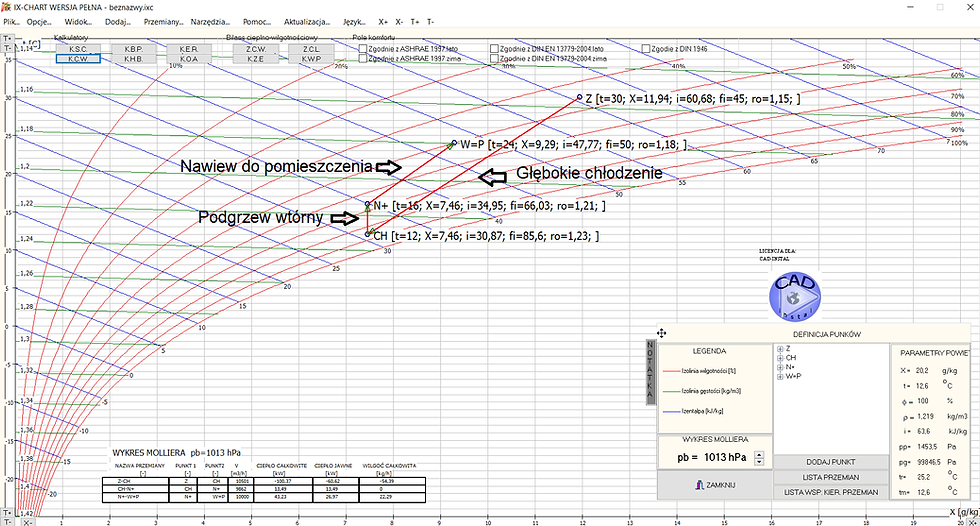Air dehumidification can be achieved through either condensation or adsorption processes. In full air conditioning processes, dehumidification is just as important as humidification. In general, many branches of industry require full control of relative humidity. In most cases, the required degree of dehumidification can be achieved through condensation dehumidification, which means cooling with water droplets and then reheating the air to the required supply air temperature.

Unfortunately, the possibility of condensation dehumidification is limited by the freezing point of water. If a refrigerant with a negative temperature were used, the condenser would immediately frost over and stop working. Therefore, the minimum absolute humidity content "X" that can be achieved through condensation dehumidification is determined by the dew point temperature. For safety, a temperature of +2°C is assumed, and for this temperature, X=4.36 g/kg.
So, what if we need to achieve a lower level of humidity, for example in meat processing plants, where the temperature in production rooms is +6°C? This temperature is achieved through industrial refrigeration systems, which are powered by glycol at a temperature of -7°C. For this temperature, the dew point temperature is 2.23 g/kg. To prevent the condensers from frosting over and to ensure that people have air to breathe, it is necessary to dehumidify the air below 2.23 g/kg. As mentioned earlier, the condensation process can achieve a result of 4.36 g/kg, so this is not possible.
The only way to achieve the required level of dehumidification is through adsorption using hygroscopic materials. The process involves the adsorption of moisture on a rotary heat exchanger filled with an appropriate hygroscopic material, followed by transferring this moisture to the so-called regeneration air. Regeneration can only occur if the regeneration air is heated to a high temperature, which reduces its relative humidity and enables moisture exchange. Unfortunately, in addition to moisture exchange, there is also a dry heat exchange, which heats the process air and requires secondary cooling, this time using dry cooling.
On Chart IX, the analysis looks as follows:

And that's it. If the article has brought something positive to your development and you want the website to continue to grow, where I share my knowledge, please give it a thumbs up, leave a comment, or share it. And of course, you can help me and yourself by purchasing a license or You can just buy me a coffee :)















Comments